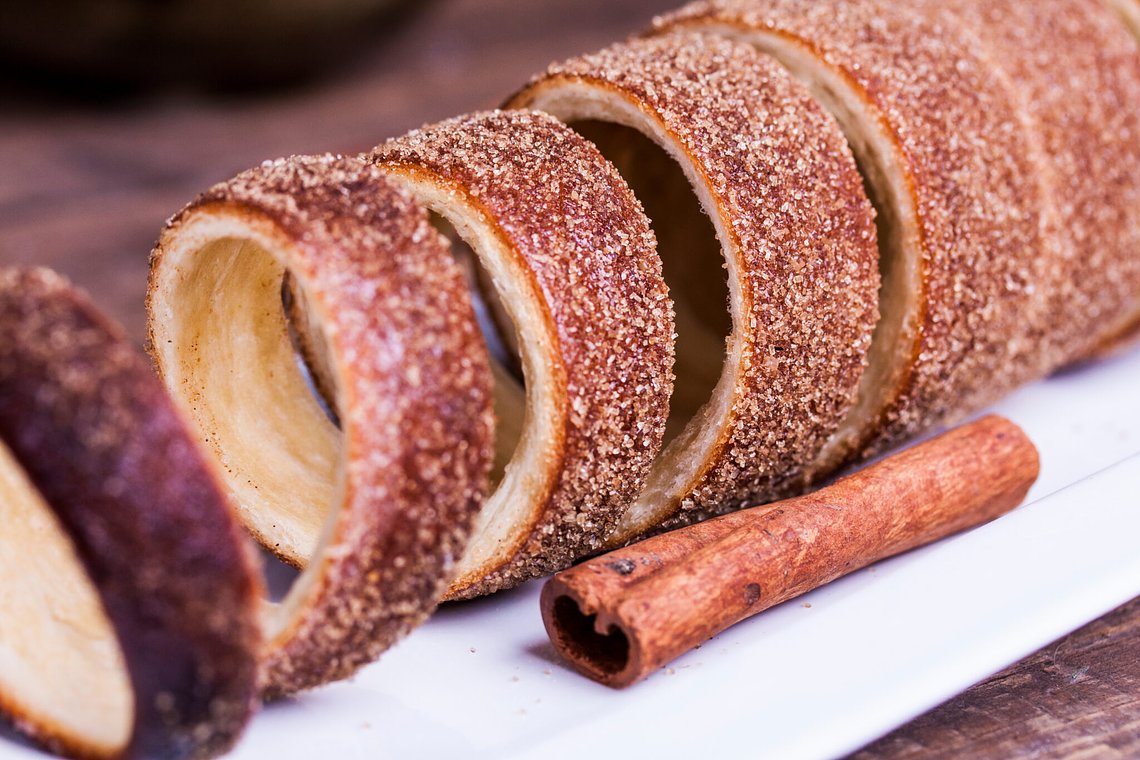A Guide to the Romanian Christmas Food

Posted on Sun 29 Aug 2021 · by Oana Moldovan
In preparing the Untravelled Paths Christmas Markets list, the Christmas spirit has always engulfed all of us here at UTP. With Rudolph the Red-Nosed Reindeer blasting through the speakers at full volume (apologies to the neighbours), we are counting down the days till Christmas time.
Christmas has always been special to me, personally. As soon as December knocks on the door, a coloured light turns on in my head, a sign that I can go into full festive mode. I love it all, from the decorations, snow, presents, warm sweaters and hot chocolate, carols and the overall joyous mood.
Having grown up in a Romanian household, the Christmas food has always held a prime spot. And the Christmas meal is not to be taken lightly. Unlike the traditional dinner everyone else has, the Romanian festive meal is a whole-day affair. Sitting down around brunch time, a plethora of dishes and Christmas delicacies will fill the whole day (and your tummy), with good cheer, family time and presents in between. So let’s dive in, shall we?
Pork is King
Pork is the Romanian go-to meat regardless, but it holds a greater significance on Christmas. December 20th is the Ignat Day, when pigs are sacrificed for good fortune. Even though the day falls into the pre-Christmas religious fasting period, when meat consumption is banned, this day is an exception. After the ritual, the family prepares ‘Pomana Porcului’ (Pork’s Charity). This is typically cooked outdoors and consists of an assortment of pork belly, shoulder, liver, or kidneys. Of course, served with garlic sauce and polenta.
Besides the meat, the other by-products, such as the fat, skin or organs are prepared and served as appetizers on Christmas Day. We’re talking tobă (a mix of pork jelly, liver and aspic), caltaboș (a sausage made out of pork organs mixed with rice, onion and spices), piftie (a traditional aspic), șorici (smoked pork rind, insanely delicious with garlic!), sausages and many other fat-based dishes.

Caltabos sausage (left) and piftie (right)
Pickled Vegetables
Pickled vegetables have been a staple winter food throughout the centuries. After the harvest season in mid-autumn, each household would prepare their own supplies for winter. This included cucumbers, carrots, cauliflower, green tomatoes, or peppers, pickled in vinegar. Nowadays, while vegetables are widely available all year, their pickled versions are kept around for their taste.
On Christmas, the pickled vegetables accompany the meat-heavy meals. They will very likely make an appearance throughout the meal, from the appetisers to the main course.
Salads
If you’re thinking, “finally, a light dish!” you’d be wrong. The festive salads are rich in flavour, and usually prepared with a mayonnaise dressing. Not Christmas-specific per se, these salads make an appearance at any celebratory meal, from holidays and anniversaries to weddings.
The center-stage belongs to Boeuf Salad. As the name hints, it is a beef salad, mixed with diced boiled vegetables such as potatoes and carrots, along with pickled cucumbers and peppers. All blended with mayo and mustard. Some families also opt to ditch the beef, making this a vegetarian-safe dish.
Next, there is the smoked aubergine salad, seasoned with onion and mayonnaise, zacuscă, a spread of smoked vegetables like eggplants or red peppers, and the caviar salad, a blend of caviar, lemon and sunflower oil.

Pickled vegetables (left) and an assortment of festive salads (right)
And some more pork…
It wouldn’t truly be a Romanian Christmas meal if the main dishes weren’t pork, would it? After quite a heavy appetizer by Western standards, and probably a few shots of palincă, it is all washed down with ciorbă, the traditional sour soup. Typically, on Christmas, the Romanian households would serve the pork meatball soup, or, for the adventurous ones, tripe soup.
The main course varies from household to household, but they all share the same ingredient. Yes, you guessed it: pork. While the majority serves the traditional sarmale (minced meat in cabbage rolls), others might enjoy a pork stew or pork chops, ribs, or other cuts. The polenta is not to be missed, however, and nor are the pickled vegetables! It is not uncommon either for pork to be replaced with a lighter meat like chicken.

Pork roast (left) and sarmale (right)
Sweet Treats
And when you think, “I couldn’t possibly any more than that,” the cozonac appears on the table. A bread-like, dough-based dessert, cozonac is an absolute treat. It is usually filled with cocoa, walnuts and even Turkish delight. The sweet smell of it fills every household on Christmas Eve, and it is best served right out the oven. Along with it, an assortment of cookies and cakes top what has been a long, yet glorious meal. Till next year…
Street Food
And is it truly Christmas if you don’t hit the Christmas Markets? Every town celebrates in its own way, from the little Christmas trees in front of the town hall, to the big, shiny Christmas Markets in the big cities such as Bucharest or Brasov. Adorned with luminous decorations, the main squares buzz with chatter as people roam around happily. The stars on top of the Christmas tree Markets, are the food stalls. Enticing you from miles away, they encompass the Christmas spirit in small portions.
To keep you warm, the mulled wine is everywhere. Vendors sell home-made versions of the aforementioned dishes in a spectacle for all senses. With samples available for everyone, you can cheat and taste all the delicacies before Christmas Day. As for the sweet tooth, there’s gingerbread, kurtos, and cozonac galore. An absolute delight!

Cozonac (left) and kurtos (right)
Don’t believe me? Well, why won’t you see for yourself on a short, 3-night Transylvanian Christmas Markets Experience?
Read more from our blog here
